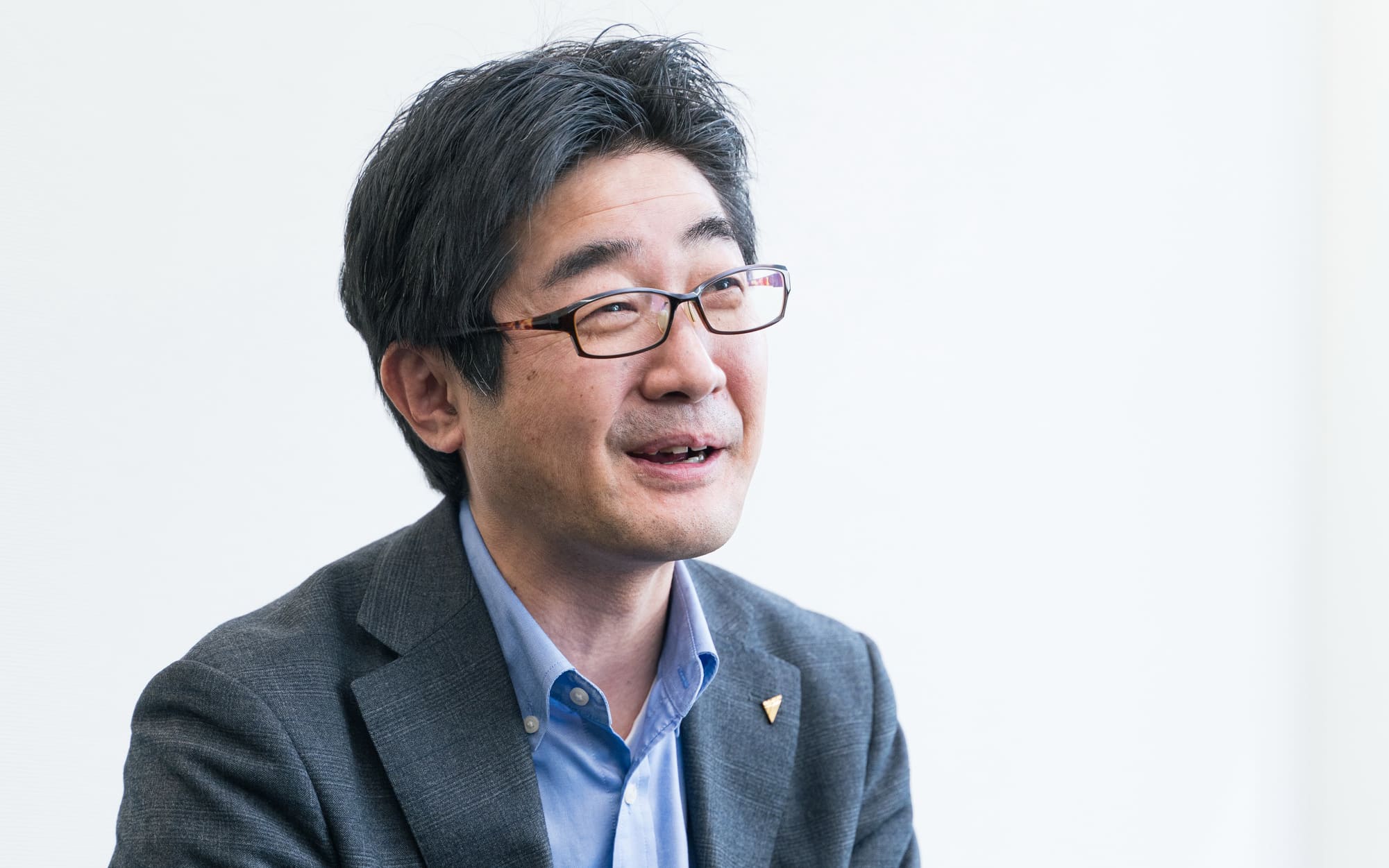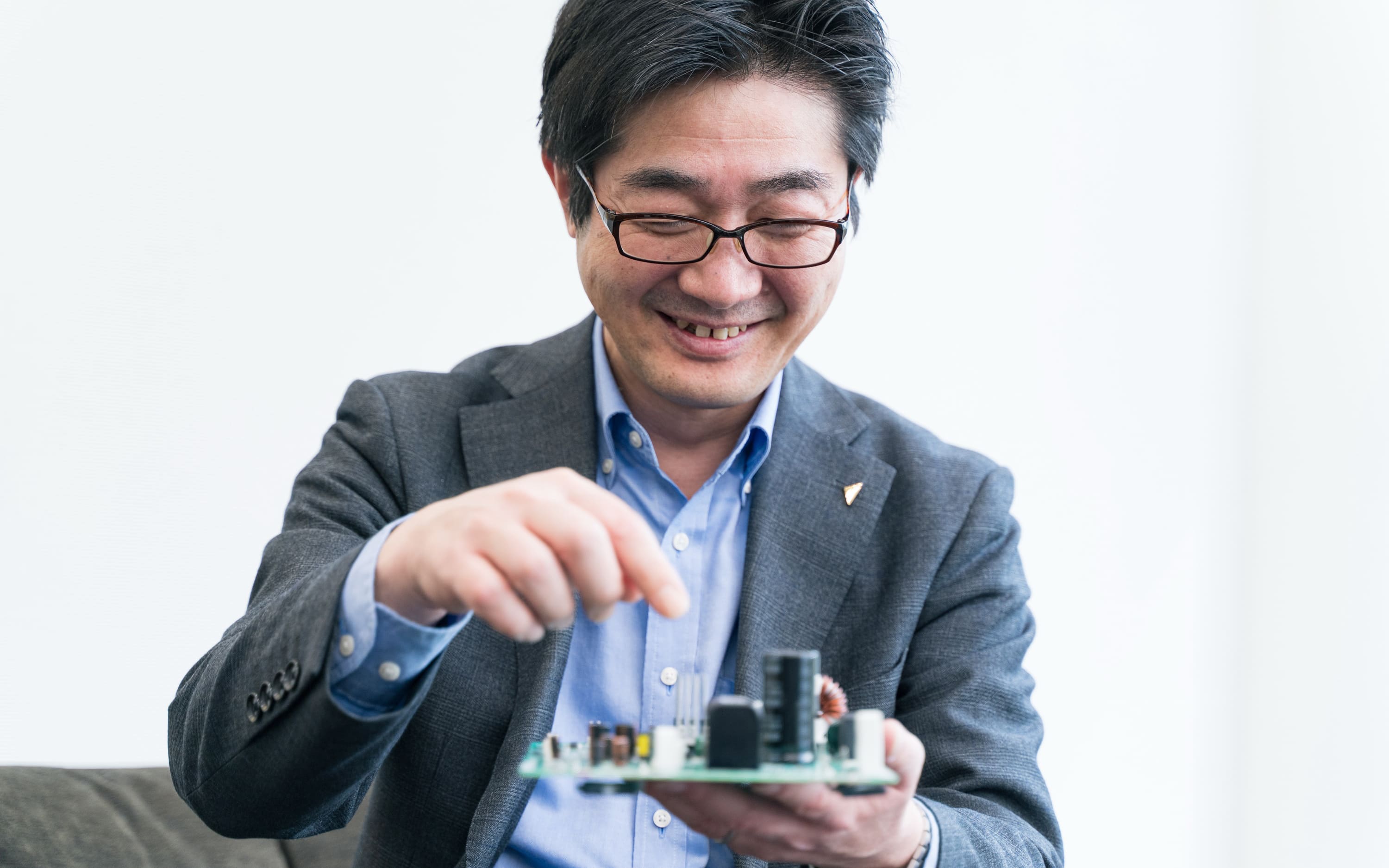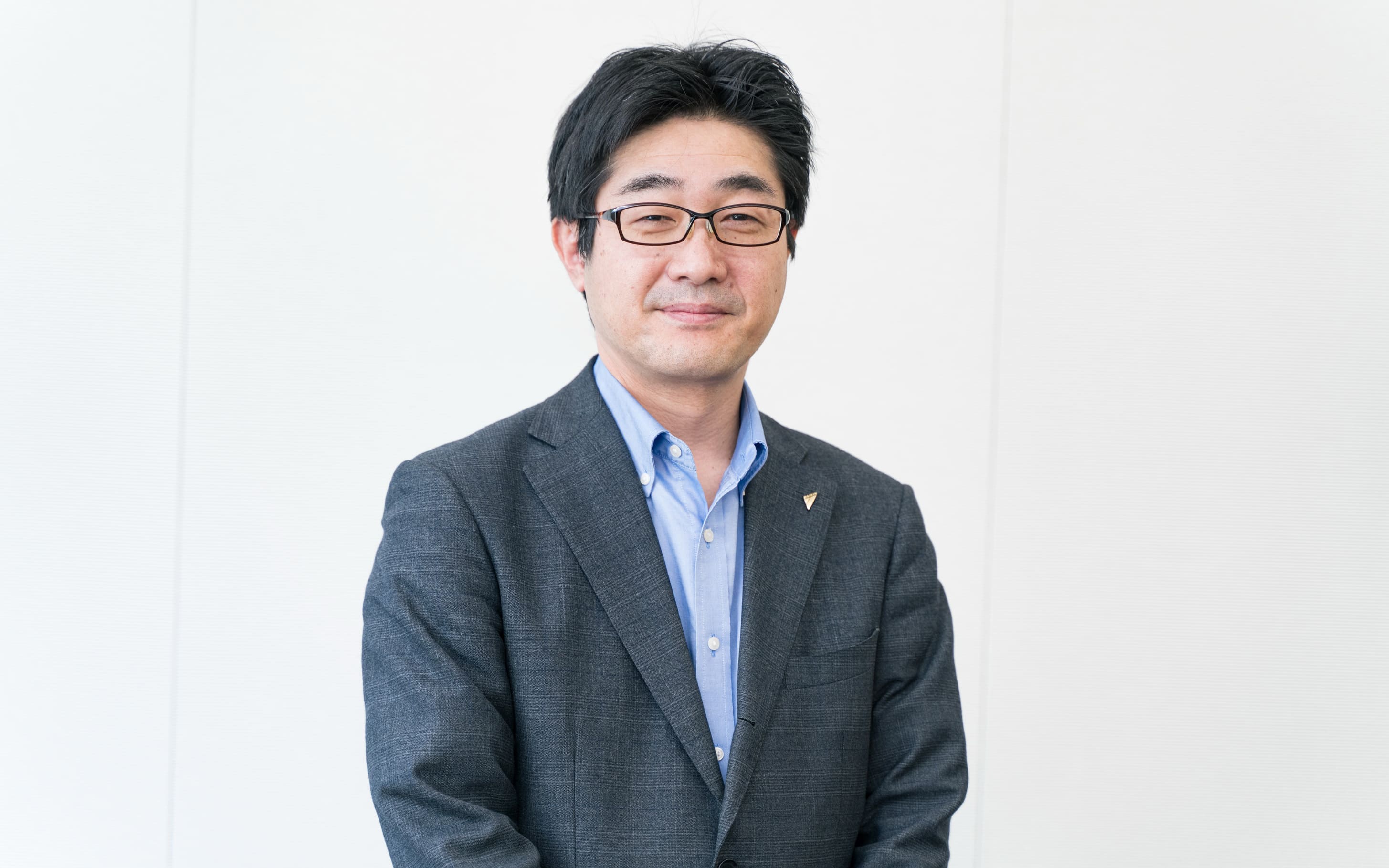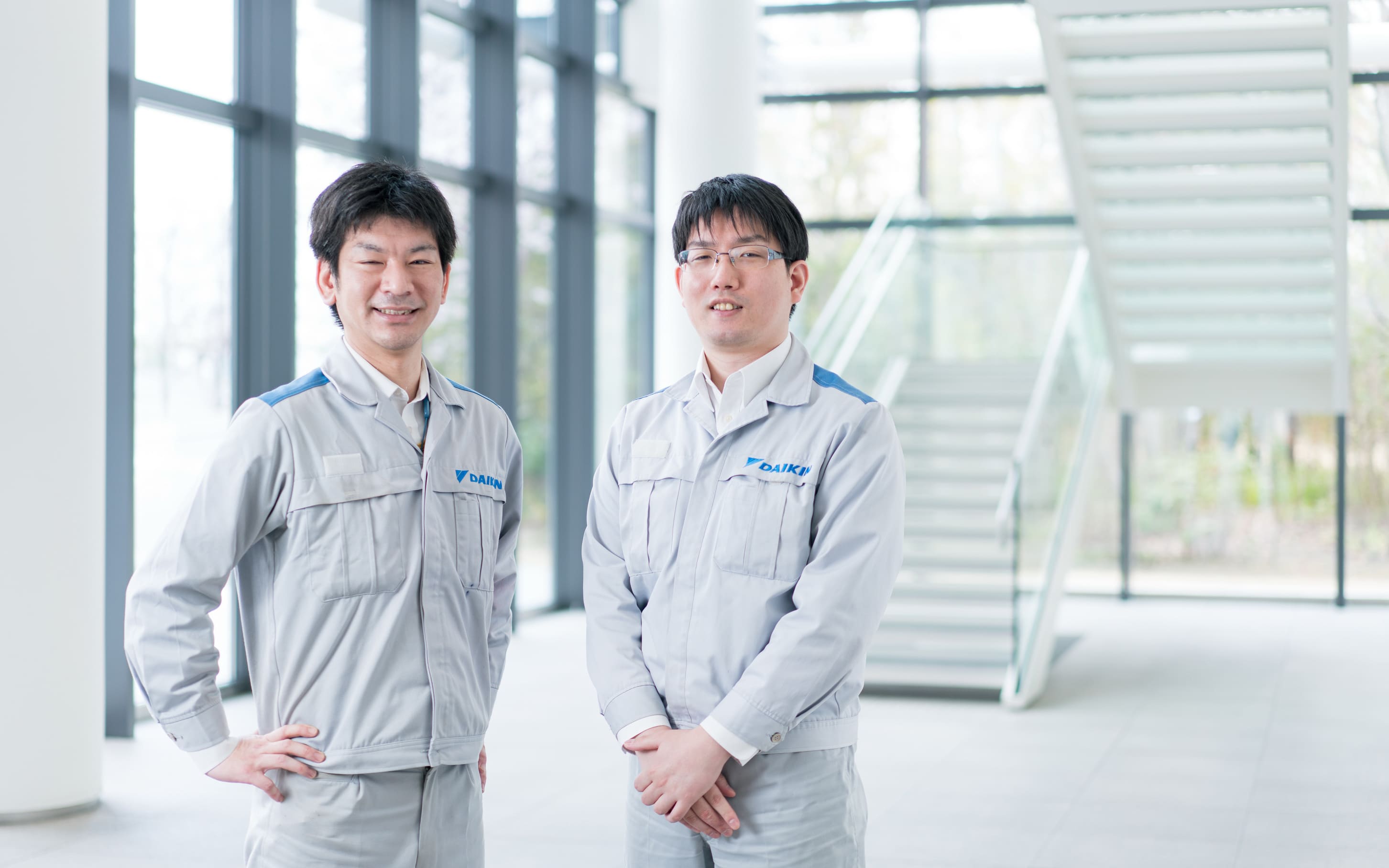In the electrolytic capacitor-less inverter, a film capacitor, whose capacitance is smaller than that of a typical capacitor, is used in the smoothing capacitor to control the inverter.
Alternatively, motor operation with an inverter causes the outflow of harmonics to the power supply side. In Japan, the total amount of harmonics is regulated for each customer, but in China and Europe, there are strict regulations for the suppression of harmonics for individual inverters, and these regulations are also applicable when inverters are exported from Japan.
For this reason, adding a PFC circuit is generally considered indispensable for harmonics suppression in conventional inverter circuits, but the electrolytic capacitor-less inverter enables harmonic suppression through inverter control without the use of a PFC circuit.
NEWS
Electrolytic Capacitor-less Inverters Contribute to Global Environmentt
FEATURE
2022.10.25
Equipping air conditioners with inverters is the most effective way for air conditioners to conserve energy. However, equipping air conditioners with inverters is not simply a matter of haphazardly installing inverters since concerns exist for harmonics and noise on the power supply side. Especially in China and Europe, there are strict standards for harmonics generated by inverters, and these standards increase cost, which is currently a barrier to the widespread use of inverter air conditioners. Consequently, Daikin Industries is actively developing electrolytic capacitor-less inverters that can suppress harmonics at a low cost.
Electrolytic capacitor-less inverter that requires no PFC (harmonics suppression) circuit
Electrolytic capacitor-less inverters are literally inverters that do not use electrolytic capacitors. Since the smoothing capacitor in the DC part of the inverter requires a certain amount of capacitance, it is common to use a relatively large-capacity electrolytic capacitor.

High-precision microcontroller technology provides key to practical application
Theoretical studies of electrolytic capacitor-less inverters have been conducted for some time. A major reason for its practical application lies in the dramatic improvement of microcontroller performance in the inverter, which has enabled multiple controls. Electrolytic capacitor-less inverters require more precise control than previous inverters. The amount of magnetic flux to the motor, output voltage, and current are fed back and controlled by the microcontroller to operate at low magnetic flux. This type of control is used to control the power input to suppress DC voltage pulsation in the DC part of the inverter and to suppress harmonics to the power supply side.
Realizing both harmonics suppression and component reduction

Room air conditioners for residential use face fierce price competition in Japan and must also compete with foreign manufacturers overseas. To meet the Chinese and European standards for harmonics suppression, a PFC circuit is added, but this increases the number of components and inverter size, reducing price competitiveness. Electrolytic capacitor-less inverters use small film capacitors for the smoothing capacitor to miniaturize inverter size and meet Chinese and European harmonic standards without adding a PFC circuit. This has facilitated a reduction in size for single-phase electrolytic capacitor-less inverters that allow them to fit on a single board. This combination of miniaturization and harmonics suppression has contributed greatly to price competitiveness.
Circuit simulator verifies operating conditions
The electrolytic capacitor-less inverter offers various advantages, and computer circuit simulation was used in its development. Various patterns of inverters can be created on a computer, and the operating conditions can be verified, including the outflow of harmonics, efficiency of power consumption, and even the effects of inverter noise. Before computer circuit simulation was used, prototypes had to be created and tested each time, which was a time-consuming and expensive development process. Computer simulation has made it easier to find optimal circuit combinations. It is now easier to find the optimum solution that minimizes noise, harmonics, and other effects while maximizing the functionality of the electrolytic capacitor-less inverter, including the capacitance of the film capacitors and the parameters of the microcontroller required for control.
Combining Daikin strengths with optimal IPM motors
With the development of electrolytic capacitor-less inverters, it has been determined that the combination with IPM motors (permanent magnet synchronous motors) provides the most energy-efficient operation. However, IPM motors come in a wide variety of shapes and characteristics.
To find the most suitable combination, an optimal electrolytic capacitor-less inverter, as calculated by circuit simulation, is examined once again in tandem with an optimized IPM motor. It is safe to say that no other air conditioner manufacturer can match the close cooperation that exists at Daikin in the development of inverters and motors.
Daikin’s greatest strength may well be the close collaboration at TIC that transcends the boundaries of development departments. This enables us to offer air conditioners that are more efficient and compact, more competitively priced, and more energy efficient. That advantage is one that other manufacturers have a hard time duplicating.
To find the most suitable combination, an optimal electrolytic capacitor-less inverter, as calculated by circuit simulation, is examined once again in tandem with an optimized IPM motor. It is safe to say that no other air conditioner manufacturer can match the close cooperation that exists at Daikin in the development of inverters and motors.
Daikin’s greatest strength may well be the close collaboration at TIC that transcends the boundaries of development departments. This enables us to offer air conditioners that are more efficient and compact, more competitively priced, and more energy efficient. That advantage is one that other manufacturers have a hard time duplicating.
Summary: Energy-efficiency for the world's air conditioners
In Japan, conversion to inverter air conditioners is almost complete, and energy-efficient air conditioners have become the norm. However, in the global air conditioner market, there are still many countries and regions with few inverter air conditioners. In many of these countries and regions, severe power shortages caused by industrialization have become a major problem forcing the national and local governments to impose restrictions on electricity usage. To solve this problem and realize carbon neutrality, Daikin believes that now is an excellent opportunity to propose inverter air conditioners as the demand for energy savings is greatly increasing.
In conjunction with motor development, Daikin’s electrolytic capacitor-less inverters, which are compact, competitively priced, and energy efficient, will also demonstrate their worth in the export of inverter air conditioners to Europe, China, and other countries with strict harmonic suppression standards.
In conjunction with motor development, Daikin’s electrolytic capacitor-less inverters, which are compact, competitively priced, and energy efficient, will also demonstrate their worth in the export of inverter air conditioners to Europe, China, and other countries with strict harmonic suppression standards.

Yasutaka Taguchi
Chief Engineer, Technology and Innovation Center
Joined the company in October 2005. Born in Fukuoka Prefecture. We believe that it is our mission to thoroughly refine our inverter technology, which will become increasingly important in the future, and contribute to society as we strive to continue to succeed ahead of our competitors.
Chief Engineer, Technology and Innovation Center
Joined the company in October 2005. Born in Fukuoka Prefecture. We believe that it is our mission to thoroughly refine our inverter technology, which will become increasingly important in the future, and contribute to society as we strive to continue to succeed ahead of our competitors.
Related article







